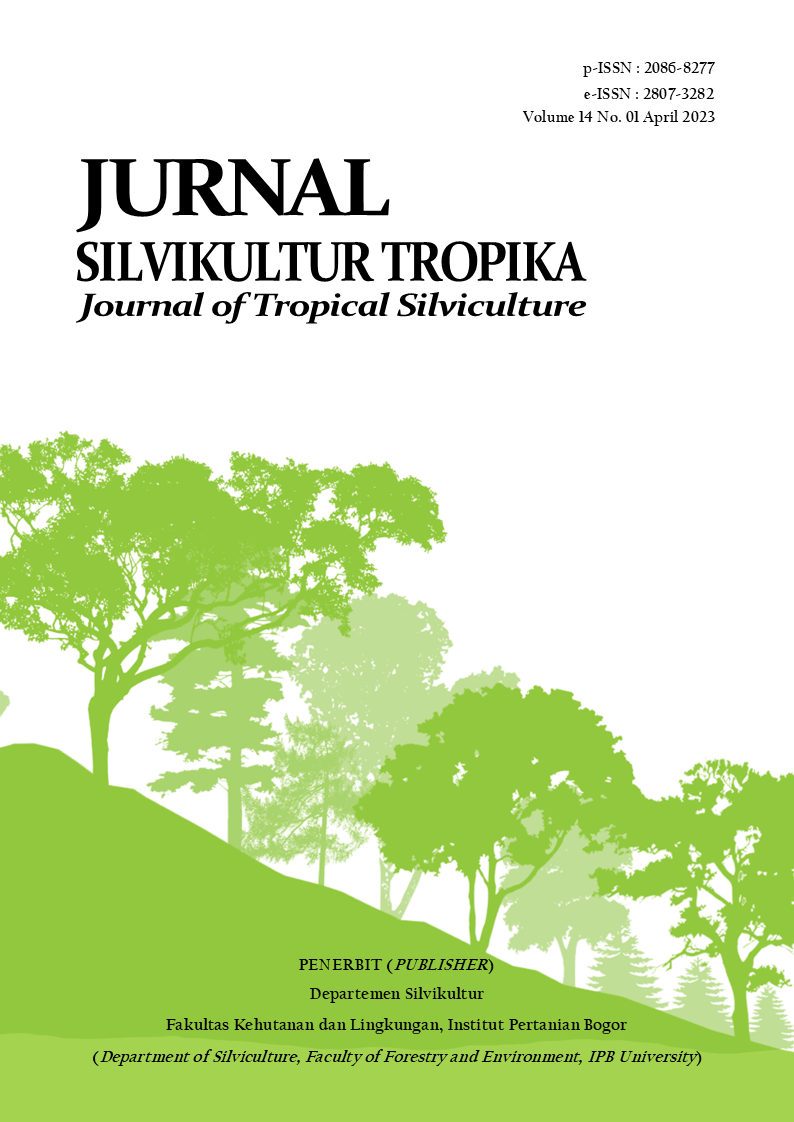White Oyster Mushrooms (Pleurotus ostreatus) Cultivation by Log and Twigs Rubber, Leucaena, Randu, and Balsa
Abstrak
Limbah tebangan berupa log dan ranting jenis kayu lamtoro (Leucaena leucocephala), karet (Hevea brasiliensis), randu (Ceiba pentandra), dan balsa (Ochroma bicolor) dapat digunakan sebagai media kultivasi jamur tiram putih (Pleurotus ostreatus) untuk meningkatkan nilai tambah dari keempat jenis kayu tersebut. Penelitian bertujuan untuk menganalisis potensi kultivasi jamur tiram putih pada media log dan ranting empat jenis kayu tersebut, kandungan gizi, dan kelayakan usaha. Penelitian menggunakan rancangan acak lengkap (RAL) faktorial tunggal dengan 9 perlakuan media log dan ranting dari keempat jenis kayu tersebut serta baglog berupa serbuk gergaji sebagai kontrol. Hasil penelitian menunjukkan rata-rata bobot basah tubuh buah pada jenis kayu karet dan lamtoro (kayu berat) baik pada media log maupun ranting yaitu mencapai 213 gram tidak berbeda nyata dengan kontrol (262 gram), namun lebih besar dibandingkan jenis kayu randu dan balsa (kayu ringan) yang hanya mencapai 130 gram. Efisiensi biologis media ranting semua jenis kayu lebih tinggi (29,6-36%) dan berbeda nyata dibandingkan media log (11-20,5%). Kandungan gizi jamur tiram putih semua jenis media cukup baik dan layak dikonsumsi. Usaha budidaya jamur tiram putih menggunakan media log dan ranting cukup layak dikembangkan untuk jangka panjang.
Kata kunci: kayu berat, kayu ringan, kultivasi jamur tiram putih, kandungan gizi
Unduh
Copyright (c) 2023 Elis Nina Herliyana, Abdul Muhyi

This work is licensed under a Creative Commons Attribution 4.0 International License.










